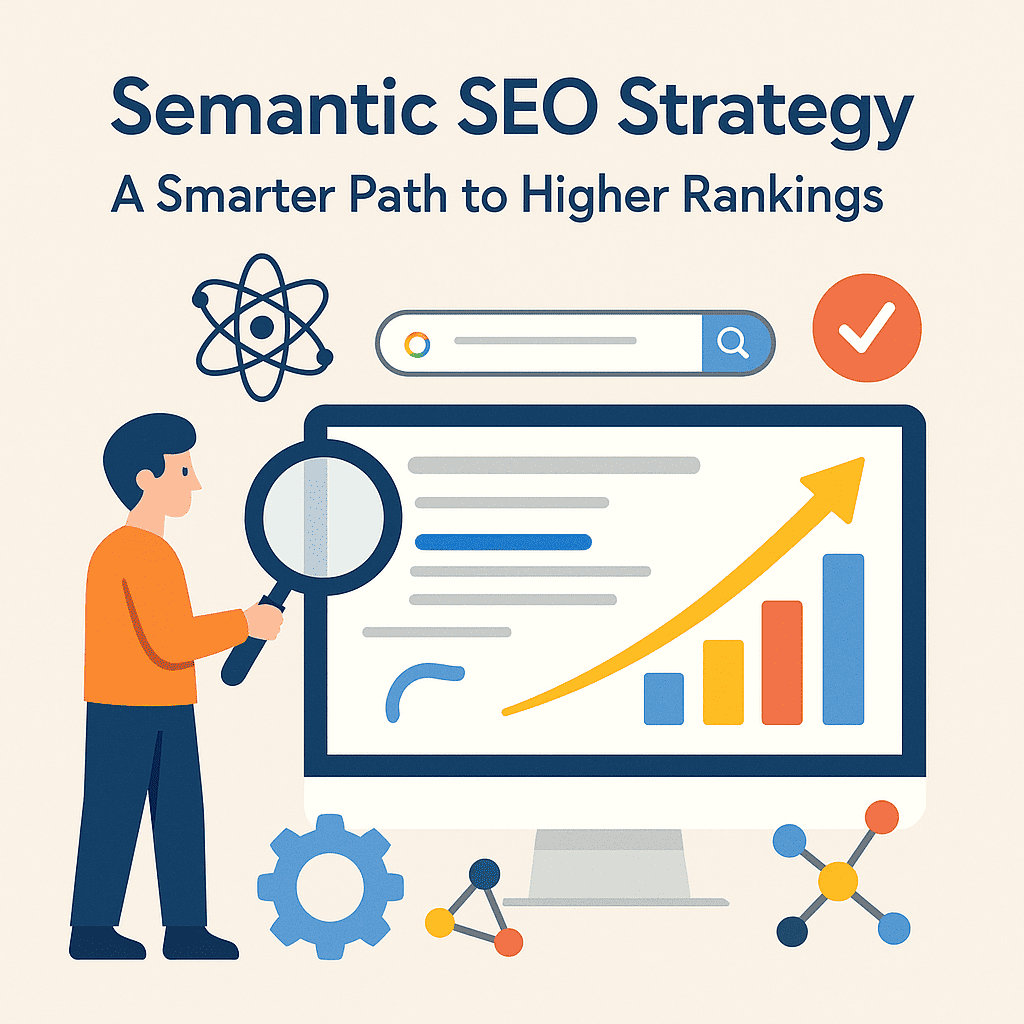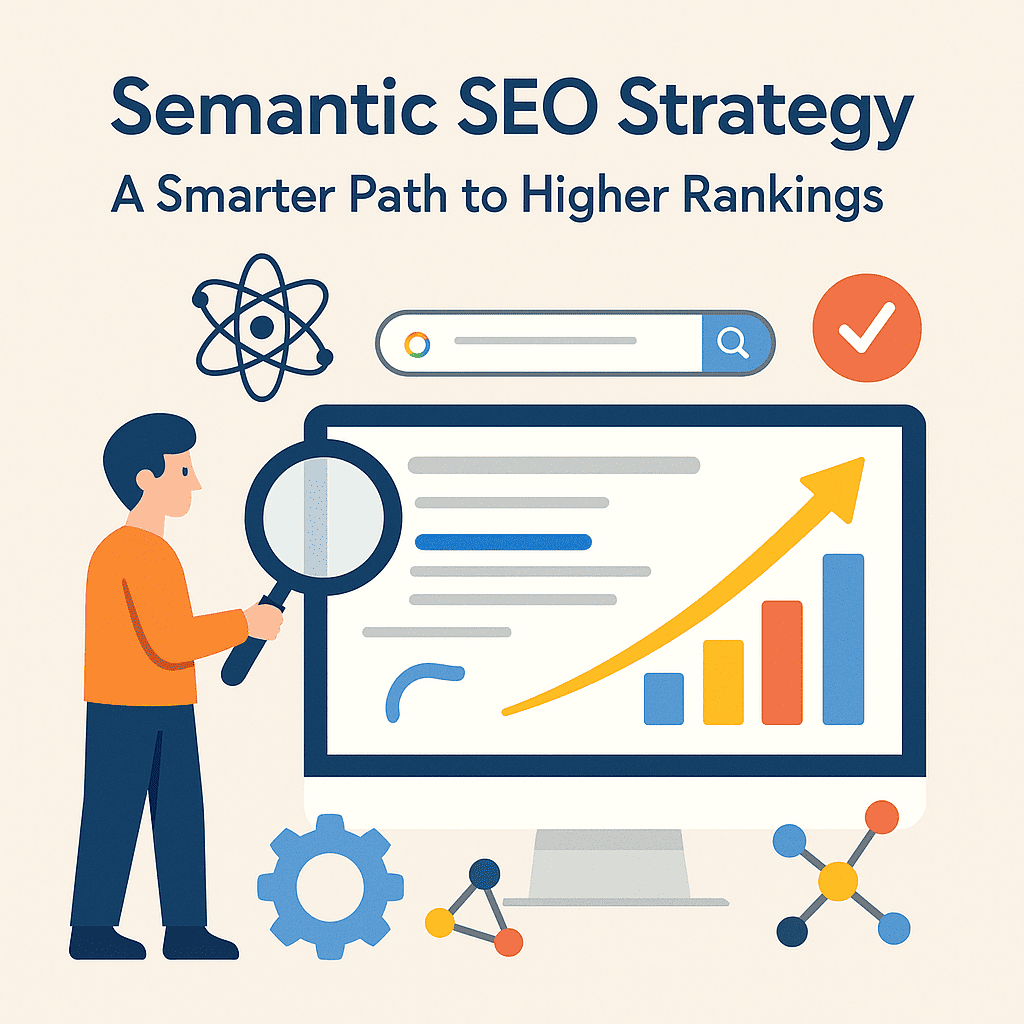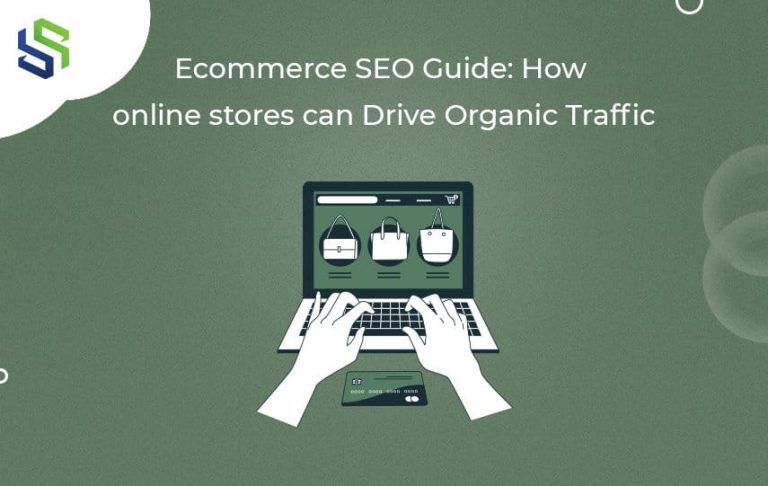Semantic SEO Strategy: A Smarter Path to Higher Rankings
Introduction to Semantic SEO
Search engines have evolved beyond matching keywords. They now strive to understand meaning. Semantic SEO focuses on creating content that aligns with user intent and the contextual depth behind search queries. We emphasize relationships between topics, entities, and concepts to help search engines interpret our content as a complete, relevant answer — not just a string of phrases.
By applying semantic SEO, we communicate more clearly with algorithms like Google’s RankBrain and BERT, which interpret context, synonyms, and related ideas. This method enhances content discoverability and strengthens authority across interconnected topics.
How Semantic SEO Differs from Traditional SEO
Traditional SEO focused heavily on specific keywords and their density. Content creators would optimize a page for a single phrase, often resulting in repetition without depth. Semantic SEO, on the other hand, prioritizes meaning and relationships.

We craft content clusters where each piece supports a central theme. Instead of targeting “SEO services,” we create interconnected resources discussing keyword clusters, semantic search, content structure, and schema markup — all reinforcing our expertise in SEO. The aim is not to rank for one term but to build topic-level authority that search engines reward.
Why Semantic Search Matters for Modern Rankings
Google’s algorithm now relies on contextual understanding. Semantic search allows the engine to interpret intent, synonyms, and relationships among entities, providing users with more accurate results. For instance, when someone searches “best laptop for designers,” Google understands they’re seeking performance, display quality, and software compatibility — not just a product list.
We implement semantic SEO to align with how Google interprets meaning. It improves query relevance, helps content appear in rich snippets, and supports better engagement because visitors find what they truly want.
Core Elements of Semantic SEO Strategy
A strong semantic SEO plan requires interconnected steps that build understanding between topics, entities, and search intent. We focus on:
- Keyword clustering and entity mapping
- Contextual content structuring
- Strategic internal linking
- Schema markup implementation
- Consistent content updates based on data
Each element contributes to how Google perceives our website’s authority on a particular subject. By combining these elements, we construct a semantic network — a web of meaning that strengthens topical trust and long-term rankings.
Keyword Clusters and Topic Authority
Moving Beyond Single Keywords
Instead of targeting one keyword per page, we identify clusters that represent variations and intent. For example, for “semantic SEO,” we may include related terms such as topic authority, entity SEO, contextual linking, and natural language processing.
We create pillar pages that summarize a broad topic and cluster pages that dive into subtopics. This structure signals to search engines that we cover the subject comprehensively.
Establishing Topical Depth
Search engines evaluate how well a website covers an entire subject area. When we produce interconnected articles covering every aspect of a theme, it communicates authority. Our internal linking further reinforces the association between these pages, ensuring crawlers grasp the semantic context.
Content Structuring for Semantic Relevance
Designing for Human and Machine Understanding
Content must make sense to both readers and algorithms. We organize information using clear headings, descriptive subtopics, and logical flow. Each section expands on a specific aspect of the core subject, reducing ambiguity.
Incorporating Related Entities and Concepts
We use entity-based writing, meaning we refer to people, places, tools, or concepts recognized by search engines. For instance, mentioning “BERT,” “RankBrain,” or “Google Knowledge Graph” provides context that aligns with search engine models. These references enhance our relevance within semantic networks.
Internal Linking and Contextual Signals
Building Thematic Connections
Internal links act as semantic bridges. When we connect related articles through meaningful anchor text, search engines understand how topics relate. Instead of linking with generic terms like “click here,” we use descriptive anchors such as “semantic content optimization” or “topic cluster strategy.”
Distributing Page Authority
Strategic linking ensures that authority flows naturally throughout the site. Pillar pages receive strength from supporting articles, while cluster pages gain context from the main hub. Over time, this structure creates a hierarchy that mirrors the semantic relationships between pages.
Using Schema Markup for Better Understanding
Defining Content with Structured Data
Schema markup is code that helps search engines interpret specific details on a page. It defines entities like reviews, FAQs, products, and services. By adding schema, we help crawlers understand what our page represents, increasing the chance of enhanced search features such as rich results.
Schema Types for Semantic SEO
We apply different schema formats depending on content type:
- Organization schema to identify our agency
- Article schema for blog content
- FAQ schema for structured question-answer sections
- Breadcrumb schema for navigation clarity
These elements make our content machine-readable while supporting a deeper semantic relationship across our pages.
Tools and Techniques for Semantic SEO
AI and NLP-Based Tools
We use advanced tools that analyze meaning instead of mere keywords. Platforms such as MarketMuse, Surfer SEO, Clearscope, and Frase help us understand content gaps and optimize for semantic richness. These tools identify related terms that strengthen topic coverage.
Entity Recognition and Topic Mapping
We also rely on Google Natural Language API, IBM Watson NLP, and SEMrush Entity Explorer to extract entities and understand their connections. Through these tools, we map how topics relate across our content ecosystem, ensuring our site communicates meaning comprehensively.
Measuring the Impact of Semantic SEO
Tracking Performance Metrics
To evaluate results, we monitor impressions, click-through rates, average ranking positions, and engagement metrics such as dwell time. Improved user retention indicates that our semantic SEO aligns with user intent.
Topic-Level Performance Monitoring
Instead of assessing individual keywords, we analyze topic clusters. For example, if “semantic SEO” is our pillar topic, we track the combined performance of supporting articles on keyword clustering, schema markup, and internal linking. This helps us evaluate topic authority rather than single-term performance.
Common Mistakes to Avoid
1. Overusing Keywords
Repeating the same term dilutes meaning and hinders readability. Search engines now penalize unnatural repetition. We prioritize semantic diversity — using variations, related phrases, and synonyms to express context naturally.
2. Ignoring Entity Relationships
Some websites produce content that lacks entity references. Without entities, search engines struggle to interpret relationships. Mentioning recognized entities helps algorithms connect our content to verified knowledge bases.
3. Failing to Update Old Content
Semantic SEO thrives on relevance. Outdated or isolated articles weaken topic connections. Regular updates ensure that all linked content remains contextually accurate and aligned with current search trends.
4. Weak Internal Linking
Unstructured linking confuses crawlers. We maintain a consistent internal linking framework connecting related topics logically. It improves navigation, authority distribution, and semantic coherence.
Future Trends in Semantic Search
1. AI-Driven Query Understanding
Artificial Intelligence continues to shape how search engines interpret meaning. Google BERT and MUM analyze language context more deeply than ever before. Future algorithms will rely even more on semantic relevance, prioritizing conceptual depth over simple keywords.
2. Voice Search Integration
Voice search queries are conversational and context-rich. We focus on natural language phrasing and long-tail questions to capture these searches. As smart assistants like Google Assistant and Alexa dominate, semantic SEO becomes essential for accurate voice query matching.
3. Entity-Based Indexing
Search engines are shifting toward entity-first indexing, where results are organized around topics rather than URLs. Establishing a strong entity profile through schema and contextual consistency will define success in upcoming years.
4. Personalized Semantic Search
As algorithms personalize results based on user behavior and location, semantic SEO ensures our content adapts naturally to different interpretations of a query. The more contextually rich our pages are, the better they serve varied intents.
The Role of Entities in Semantic SEO
Entities are the backbone of semantic search. They represent distinct concepts — such as brands, people, locations, or products — that search engines can recognize independently of language. For example, “Google BERT” or “SEO Supremacy” is not just text but an entity within the Knowledge Graph.
We ensure that our pages mention and connect entities naturally. Doing so builds relevance signals that align with structured data models used by search engines. The more accurately we relate entities to one another, the stronger our site’s contextual depth becomes.
Entity association also aids voice search and AI assistants, enabling our content to be discovered across devices and formats.
Topical Authority and Semantic Mapping
Building topical authority involves connecting every piece of content around a subject through semantic links. When we publish an article about “semantic SEO,” we also create supporting materials about keyword clusters, content structure, and schema markup.
Each article links back to the main pillar page, forming a content cluster. This network signals to search engines that we cover the subject comprehensively. Over time, our site becomes a go-to resource, increasing the likelihood of ranking for multiple related queries.
We use topic maps to visualize how different pieces of content connect. These maps reveal missing subtopics or underlinked areas, guiding us to strengthen the network.
User Intent and Semantic Optimization
Every search reflects intent — informational, navigational, or transactional. Understanding this is vital for semantic SEO. We analyze query intent to align our content with the problem users aim to solve.
For instance, a user searching “how to implement schema markup” expects actionable steps. Our article should deliver structured examples, not generic explanations. Matching the depth and context of intent leads to better dwell time and engagement — two signals search engines value.
Semantic SEO thrives on answering why and how, not just what.
Semantic Relationships and NLP Integration
Natural Language Processing (NLP) models like Google BERT and OpenAI’s language understanding frameworks analyze syntax, semantics, and relationships. We apply NLP analysis to optimize readability and coherence.
Using NLP tools, we identify missing semantic terms — such as related nouns, verbs, and entities — that enhance topic coverage. This ensures our content mirrors natural human expression while satisfying machine interpretation.
For example, a paragraph about “keyword clustering” should also include related terms like “topic modeling,” “intent grouping,” and “semantic relevance.” Such integration strengthens both readability and algorithmic alignment.
How Semantic SEO Enhances Featured Snippets and Zero-Click Results
Semantic SEO improves our chances of appearing in featured snippets, People Also Ask, and knowledge panels. Search engines prefer content that directly answers questions with clear structure and contextual cues.
We craft sections with question-based subheadings and concise explanations. Adding structured data such as FAQ schema or Q&A markup increases the likelihood of enhanced display in search results. This strategy not only drives organic impressions but also reinforces brand authority.
The Connection Between Semantic SEO and E-E-A-T
Expertise, Experience, Authoritativeness, and Trustworthiness (E-E-A-T) are pillars of modern SEO evaluation. Semantic SEO strengthens E-E-A-T signals by ensuring that our content aligns with recognized entities, reliable references, and topic depth.
When we cite credible sources, include expert quotes, and connect to verified data, search engines interpret our content as authoritative. Over time, this builds a reputation that enhances overall domain trust and ranking potential.
Semantic SEO and Content Refresh Strategy
Semantic SEO is not a one-time implementation. Topics evolve, and so do search intents. We regularly revisit older content, add new subtopics, and strengthen links between updated and existing pages.
Refreshing content with semantic context ensures it remains relevant. It also allows older URLs to capture new search opportunities as algorithms adapt. This ongoing improvement sustains our topic authority across time.
Data-Driven Content Planning for Semantic Depth
We rely on data to uncover meaningful gaps. By analyzing SERP features, People Also Ask, and related searches, we identify new angles within a topic.
For instance, if multiple users search “semantic SEO tools,” we expand that into its own article while linking it back to the pillar piece. Such data-driven decisions maintain consistency in our semantic architecture and ensure every question in the niche finds an answer on our site.
Technical Aspects Supporting Semantic SEO
Behind every piece of semantically rich content lies solid technical infrastructure. We ensure:
- Proper HTML heading hierarchies (H1 > H2 > H3)
- Consistent canonical tags
- Clear URL structures reflecting content themes
- XML and image sitemaps
- Fast loading speed and mobile responsiveness
Technical clarity enables search engines to crawl and interpret semantic relationships more efficiently. Without it, even the most contextually rich content can underperform.
Building Semantic Authority Through External Links
External linking remains an important ranking factor. We link to reputable sources that reinforce the meaning of our content. When credible sites reference similar entities or topics, it strengthens the semantic association of our page.
We also pursue backlinks from thematically related sites rather than random domains. This creates consistent external context supporting our subject authority, which search engines interpret as topical relevance.
Example: Implementing Semantic SEO for a Client
When optimizing a technology blog, we organized their content around AI tools as the pillar theme. Supporting articles covered machine learning algorithms, natural language processing, AI in SEO, and predictive analytics.
We interlinked all pages, added schema markup for articles, and analyzed entities through Google NLP. Within four months, the client achieved a 40 percent increase in impressions and multiple featured snippet appearances — clear indicators of semantic authority.
Integrating Semantic SEO with Content Marketing
Semantic SEO complements content marketing efforts by ensuring every blog, guide, or video reinforces a unified theme. Instead of scattered posts, we maintain narrative consistency that deepens topical expertise.
We collaborate with content teams to produce educational series that answer layered user questions. For instance, a “semantic SEO” pillar might include explainer videos, infographics, and case studies, all connected through internal links and consistent entity references.
How Semantic SEO Improves Conversion Paths
By aligning content with intent, users move naturally through the funnel — from informational to transactional pages. For example, someone reading “semantic SEO basics” can follow internal links to “advanced semantic tools” and eventually “hire SEO Supremacy.”
Semantic organization simplifies user journeys, reduces bounce rates, and builds trust. When users easily find connected information, they’re more likely to engage and convert.
Semantic SEO Audits and Ongoing Optimization
A semantic SEO audit evaluates how well a site expresses meaning. During audits, we examine:
- Topic coverage and clusters
- Internal linking patterns
- Schema implementation
- Entity usage consistency
- NLP readability scores
We identify missing semantic connections and update pages accordingly. Continuous refinement ensures our semantic network evolves with algorithm changes and audience behavior.
How AI Assists Semantic SEO
Artificial Intelligence analyzes massive datasets to detect relationships between topics. We use AI-based recommendations to expand content coverage, identify entity gaps, and predict potential search queries.
Machine learning models evaluate which terms co-occur across top-ranking pages. Incorporating such terms helps us mirror successful semantic structures organically, giving our content a contextual advantage.
Local SEO and Semantic Search
Semantic SEO also influences local results. Google interprets location entities — such as cities, landmarks, and service areas — semantically. For example, optimizing for “SEO agency in Toronto” involves connecting our brand with related entities like Canada, Ontario, and local business categories through structured data and contextual content.
We integrate local schema markup and entity-based references to ensure Google comprehends our geographical relevance accurately.
Semantic SEO and Multilingual Contexts
When working with multilingual clients, we apply semantic consistency across translations. Each version preserves the same entity references and topic structure, ensuring search engines understand equivalence among languages.
This cross-lingual consistency strengthens international rankings while preventing fragmented signals across different regional domains.




